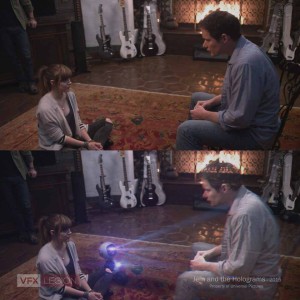 VFX Legion is a virtual visual effects company with a small office of production staff in Burbank, Calif. and a team of 30-50 artists spread across six countries. Simultaneously running anywhere from 8-15 television and feature film visual effects projects, spread across a global team creates a logistical challenge with a large number of moving parts, all of which are tracked and managed via a Shotgun pipeline.
VFX Legion is a virtual visual effects company with a small office of production staff in Burbank, Calif. and a team of 30-50 artists spread across six countries. Simultaneously running anywhere from 8-15 television and feature film visual effects projects, spread across a global team creates a logistical challenge with a large number of moving parts, all of which are tracked and managed via a Shotgun pipeline.
“Shotgun is the lifeblood of this studio,” said James Hattin, VFX Legion co-founder. “On the front end, we use it for shot assignments, shot reviews and always do first pass review to make sure artists are getting their shots right the first time around. The artists publish to Shotgun from wherever they’re based and then we review everything here in Burbank. Shotgun is an essential part of how we do business.”
The company was founded in 2012 as a television and feature film visual effects facility focusing heavily on compositing and 3D work. All of the company’s staff and freelance artists work from their homes or personal studios in New Zealand, Australia, Thailand, Canada, Germany and all across the United States. The company has worked on television shows such as Scandal, How to Get Away with Murder, and feature films including Insidious 3 and Jem and the Holograms.
Hattin proved that this unique model could work after VFX Legion was awarded 400 visual effects shots on the film Stretch, which the studio completed and delivered within 10 days. “With Shotgun, Aspera and good communication, we don’t need to invest in the overhead that weighs down many traditional visual effects facility models,” he said. “We’ve also been building tools to leverage the Shotgun API so that we can automate Aspera transfers without artists having to do anything manually. We also have an artist portal website where they can input their availability and schedule, and can also see their latest tasks and shot assignments. All of the information on that portal is coming through Shotgun, and input is collected from Shotgun in the background.”
While the company primarily uses Shotgun’s out-of-the-box features, they are currently looking into configuring the pipeline toolkit to take advantage of Shotgun’s integrated Maya and Nuke tools.
“Maintaining a solid pipeline is the most important thing for us. Unlike a traditional facility with one server in a room, we are wholly dependent on our pipeline to communicate with artists to make sure that naming schemes and workflows are the same,” Hattin explained. “When all is said and done, it’s important that to the outside world we are indistinguishable from a traditional VFX facility.”





